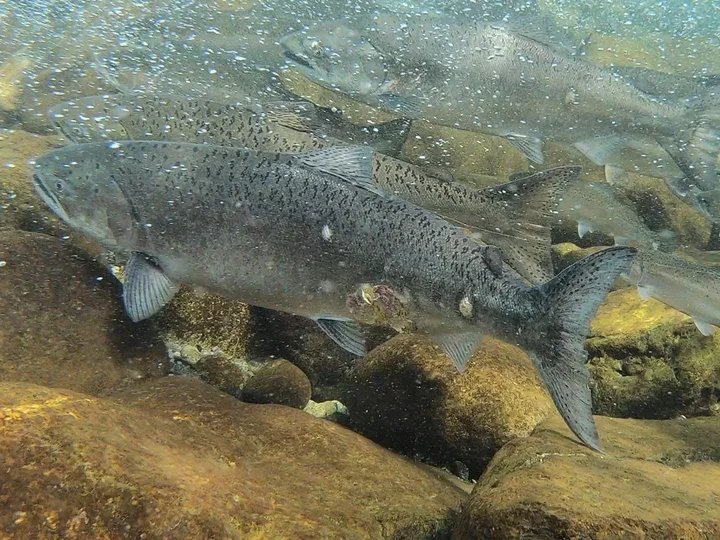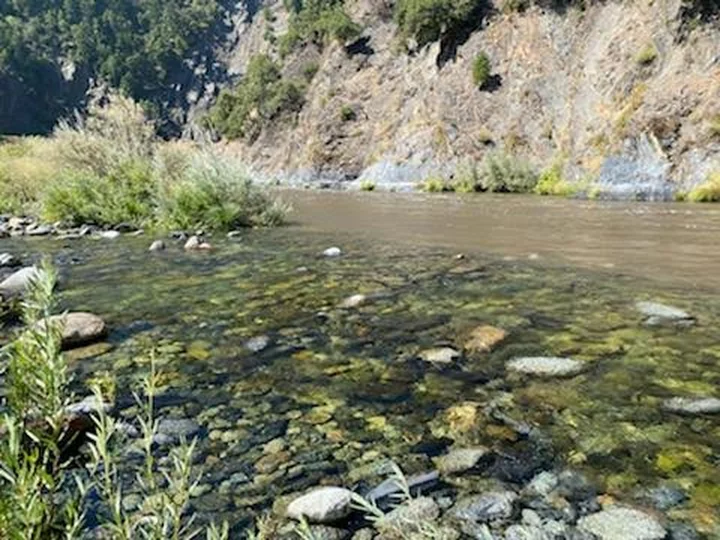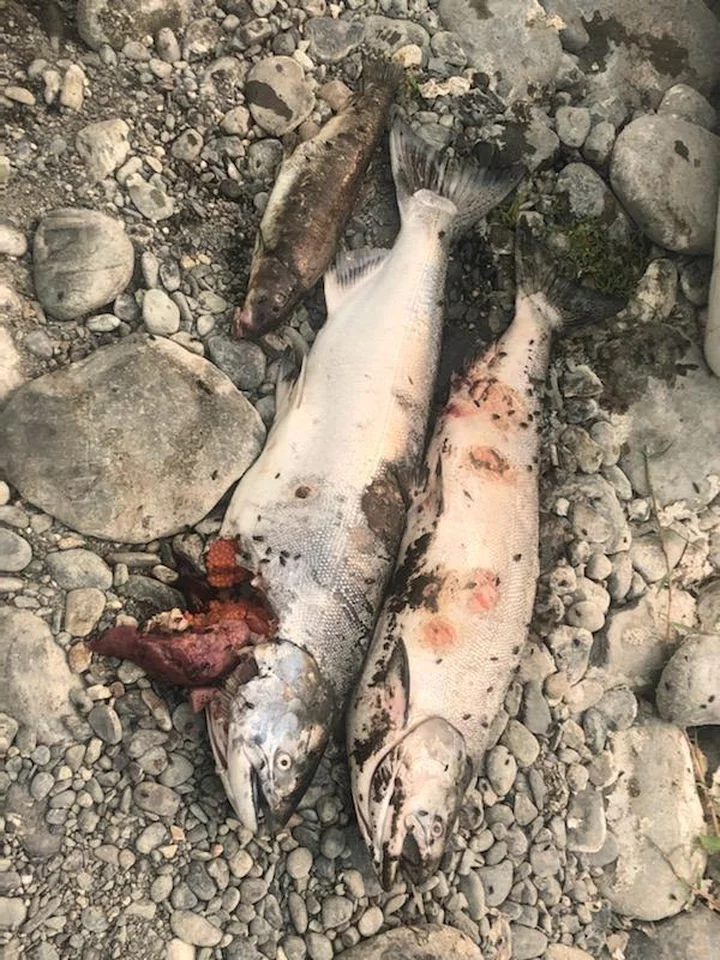Adult Chinook showing signs of external lesions | Photos courtesy Six Rivers National Forest
Six Rivers National Forest release:
Isolated rain events in early August released tons of suspended sediment downstream from the McKinney Fire. Soil, ash, and other organic matter was discharged creating highly turbid water which is still visible within the Klamath River today.
In response, the Six Rivers National Forest Fisheries Program in partnership with the Klamath Basin Fish Health Assessment Team (KFHAT), have been monitoring water quality and fish health conditions within the Klamath River. Crews are surveying mainstem refuges and incoming cold tributaries where adult fish typically hold during their migration. A portion of these adult Chinook and steelhead have been showing visible signs of Flavobacterium columnare (bacterial gill rot) and Ichthyophthirius multifillis (Ich infection—a parasite in the Phylum Ciliophora). These fish diseases are not uncommon for the Klamath River, but sick and dead Chinook salmon have been observed over the past six weeks throughout most of the basin which is uncommon.
“High stream temperatures coupled with low flow conditions from late July through early September certainly worsened the situation within the Klamath River,” says LeRoy Cyr, District Fish Biologist on the Orleans, Ukonom, and Lower Trinity Ranger District.Organic debris and filamentous bacteria found in Chinook gills
Thermal fish refuge at Dillon Creek confluence
Moribund Chinook holding near tributary confluence
Chinook and Klamath River Small Scale Sucker carcass recovery
Six Rivers National Forest fish studies also show a lot of migrating adult Chinook and steelhead crowding into small thermal refuges where these pathogens can quickly spread. Since early August, the Klamath River mainstem discharge at Orleans has been hovering around 1.600 cubic feet per second (c.f.s.) until September 10th when release flows below Iron Gate bumped it up to 2,400 cfs. As a result, mainstem temperatures dropped from 24° to 20° C.
“We are hopeful that more forecasted rain in the coming weeks can further improve conditions, but the KFHAT is still very concerned about the overall health, migration, and spawning success of this fish run,” says Cyr. “It is imperative that we continue to work together to monitor, report, and find a future course of action.”
The KFHAT was formed in 2003 when a large fish kill occurred resulting in the loss of about 35,000 adult Chinook salmon. Low flows, high temperatures and high fish densities in September 2003 allowed disease to run rampant. Since that time, basin partners have worked together to develop preventative measures that safeguard against such a catastrophic fish kill from occurring again. The group is currently carrying out weekly meetings and real-time communication due to the on-going elevated concerns throughout much of the basin.
On September 9, 2022, the group was able to complete a fish kill response training event (the first in several years), with attendees representing US Forest Service, CA Dept. Fish & Wildlife, CA Waterboards, Karuk Tribe, Yurok Tribe, US Fish &Wildlife Service, Salmon River Restoration Council and Mid-Klamath Watershed Council.
“The Klamath Fish Health Assessment Team allows us to bring together data from across the basin, and provide both updates to the public, as well as information and potential recommendations to resource managers,” says Dan Troxel, Environmental Scientist for California Department of Fish and Wildlife. “Data from KFHAT and similar technical workgroups informed the decisions which provided additional releases of water down the Trinity River in late August 2022 to ameliorate disease concerns in the lower Klamath River. However, this may have also served to allow more fish to migrate into the mid-Klamath region, where environmental and disease concerns are equally problematic, resulting in the high concentrations of fish observed by USFS Orleans.
Six Rivers National Forest and the KFHAT team will continue to be vigilant and monitor this situation as it progresses.





CLICK TO MANAGE